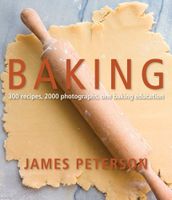Advertisement
Yeasted Breads
Appears in
Published 2009
Some of the most complex foods—wine, cheese, and bread—are made by manipulating one ingredient in a myriad ways to create finished products of great subtlety and variety. Bread, cheese, and wine all rely on microorganisms—bacteria, mold, and yeast—in often symbiotic combinations to shape the food’s eventual flavor, aroma, and texture.
The bread we buy at the supermarket is made from a single strain of yeast, while artisan-style breads are manipulated to encourage the growth of bacteria and wild yeasts. Because virtually all environments have their own miniature ecosystems, artisan-style bread made in one place is often different from bread made in the exact same way somewhere else. By making slight changes in technique, kneading time, rising time, and baking temperature, we can make an enormous variety of breads without changing the basic ingredients. There are so many variables that even the slightest changes result in a different loaf; in a home environment, it is almost impossible to predict exactly how the bread will turn out. There will always be a little of the unanticipated, which is part of what makes bread baking fun.

